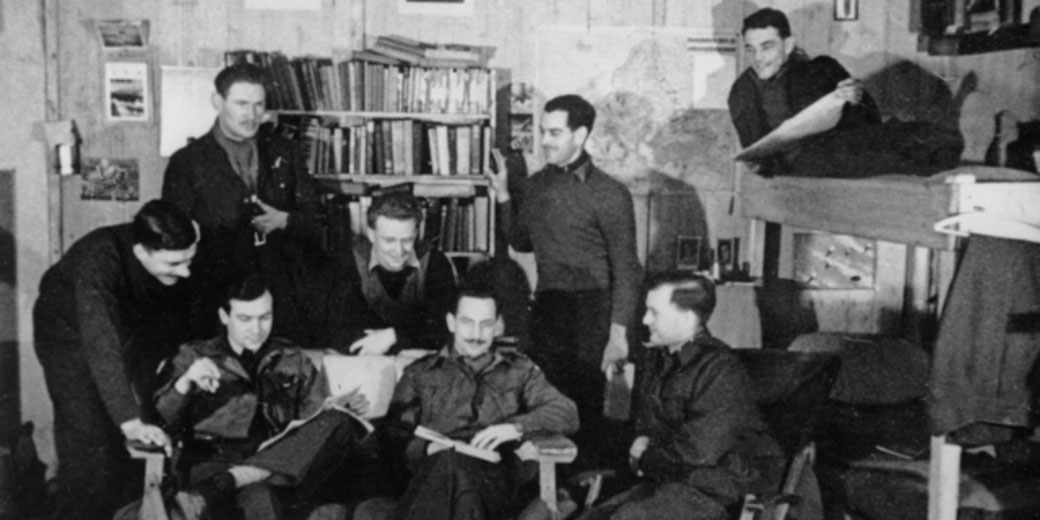The real WWII 'Great Escape': How 76 men escaped from Nazi captivity in Stalag Luft III

On the night of 24 March 1944, seventy-six Allied airmen broke out of Stalag Luft III, a high-security prisoner-of-war camp located deep inside Nazi Germany.
They crawled through a hand-dug tunnel, which stretched 102 metres beneath the barbed wire perimeter, and slipped into a nearby forest under the cover of darkness and attempted to vanish into the frozen countryside.
The breakout, later known as the “Great Escape,” became one of the most dramatic acts of resistance during the Second World War, involving coordinated planning and precise engineering, with more than 600 prisoners spending months on secret work.
The 'escape-proof' Stalag Luft III camp
Near the town of Sagan in Lower Silesia (now Żagań, Poland), the Germans constructed Stalag Luft III to hold captured airmen from Britain, the United States, Canada, Australia, Poland, Norway, and other Allied nations.
German authorities believed the camp was escape-proof. This is because they selected sandy soil that collapsed easily, raised huts on stilts to expose digging activity, and installed geophone microphones to detect underground disturbances.
What is more, armed guards patrolled the perimeter, and observation towers stood above the compound at regular intervals.
Who were the escapees?
Among the prisoners confined there were many who had escaped from other camps or who had made previous attempts.
Roger Bushell, a South African-born RAF officer known as “Big X,” took charge of planning the escape.
He insisted on a mass breakout rather than individual escapes. As a result, the prisoners worked collectively to undermine the German defences by overwhelming them with a large-scale operation.
Bushell himself would later be executed as one of the fifty selected for retaliation.
How the escape plan was created
Underneath three separate buildings, prisoners began digging tunnels they called Tom, Dick, and Harry.
Each tunnel required timber supports, lighting and air flow, all built from stolen materials such as bedboards, powdered milk tins, and wiring looted from unused parts of the camp.
Thousands of bedboards were repurposed to support the tunnels. “Tom” was discovered by the Germans before completion, and “Dick” was eventually used for storage.
In hidden pockets in their clothing, prisoners lost excavated sand quietly as they walked about the compound.
This technique, known as “penguining,” allowed them to disperse the yellow sand without drawing attention.
Meanwhile, others focused on the production of forged documents, railway schedules, identity papers, and travel permits.
From inside the barracks, prisoners stitched civilian clothing out of blankets and dyed them using boot polish and crushed berries.
Several men trained in European geography and learned travel routes by heart.
Others practised accents and mannerisms to pass as migrant workers or displaced labourers.
"Go, go, go!" How the escape unfolded
On the night of the escape, heavy snow blanketed the camp, and the tunnel exit emerged several metres short of the forest line.
As guards continued their regular patrols above, prisoners coordinated their exits using a signal rope and a lookout system.
Delays, freezing temperatures, and a tunnel collapse slowed progress, yet seventy-six men passed through the tunnel before the seventy-seventh was spotted and the alarm was raised.
No Americans were among them, as they had been moved to another compound months earlier.
The manhunt for the escapees
In response, German forces launched a large-scale manhunt. Search teams questioned civilians, intercepted trains, and swept nearby forests and towns.
Of the seventy-six escapees, seventy-three were eventually recaptured. Most had travelled on foot in freezing conditions, often with poor disguises and limited supplies.
Only three men managed to reach safety. Norwegian pilots Per Bergsland and Jens Müller made it to Sweden, while Dutch pilot Bram van der Stok travelled over 1,500 miles through occupied France and Spain to reach Gibraltar.
Müller later recounted his journey in a memoir titled Tre kom tilbake (Three Came Back).
The tragic punishments handed out for those caught
Shortly afterwards, Adolf Hitler ordered a brutal reprisal. Initially demanding the execution of all seventy-three recaptured men, he was convinced by senior officers to limit the number to fifty.
The Gestapo selected the victims and staged their deaths as failed escape attempts.
Victims were shot in pairs on remote roads or in isolated clearings. The murders clearly violated the Geneva Convention and sparked international condemnation.
After the war, British investigators from the RAF’s Special Investigation Branch, led by Wing Commander Wilfred Bowes and Squadron Leader Frank McKenna, pursued the perpetrators, identified key suspects, and brought many to justice in military tribunals.
In military terms, the escape did not affect the outcome of the war. Even so, it disrupted German internal security operations and pulled away forces for weeks.
In 1963, the breakout received renewed public attention with the release of The Great Escape, a film that blended real events with dramatic retelling.
The story captured global interest, although it distorted some facts, such as the nationalities and actions of those involved.
Specifically, the film exaggerated American participation, which in reality had been minimal during the actual escape.
Today, the site of Stalag Luft III in Żagań contains a museum and memorial dedicated to the escape.
Visitors can view sections of the reconstructed tunnel, examine tools used in the operation, and read the names of the fifty officers who were killed etched into stone.
What do you need help with?
Download ready-to-use digital learning resources
Copyright © History Skills 2014-2025.
Contact via email
With the exception of links to external sites, some historical sources and extracts from specific publications, all content on this website is copyrighted by History Skills. This content may not be copied, republished or redistributed without written permission from the website creator. Please use the Contact page to obtain relevant permission.





